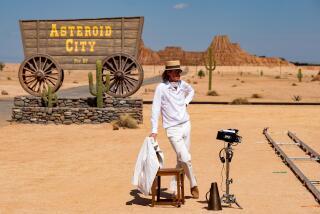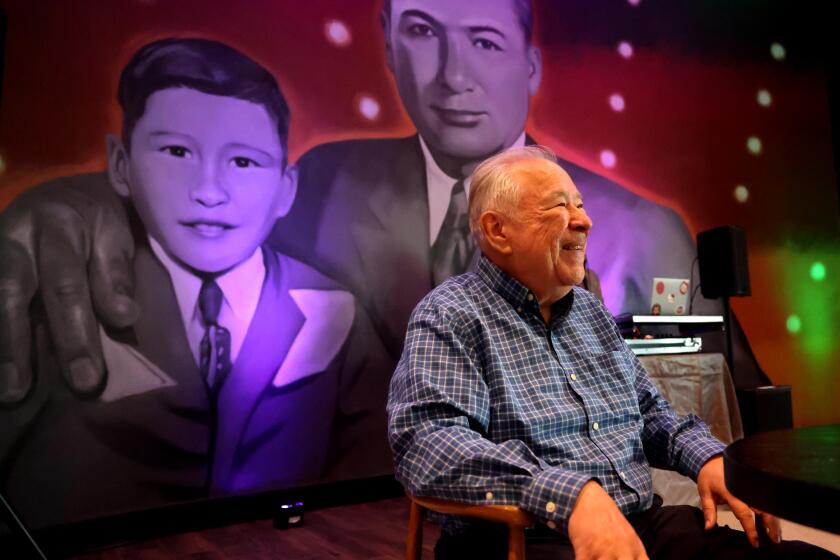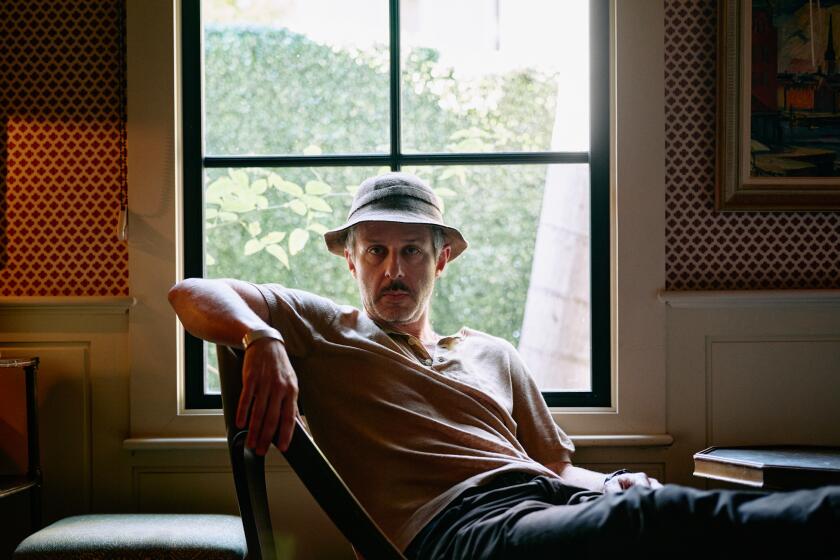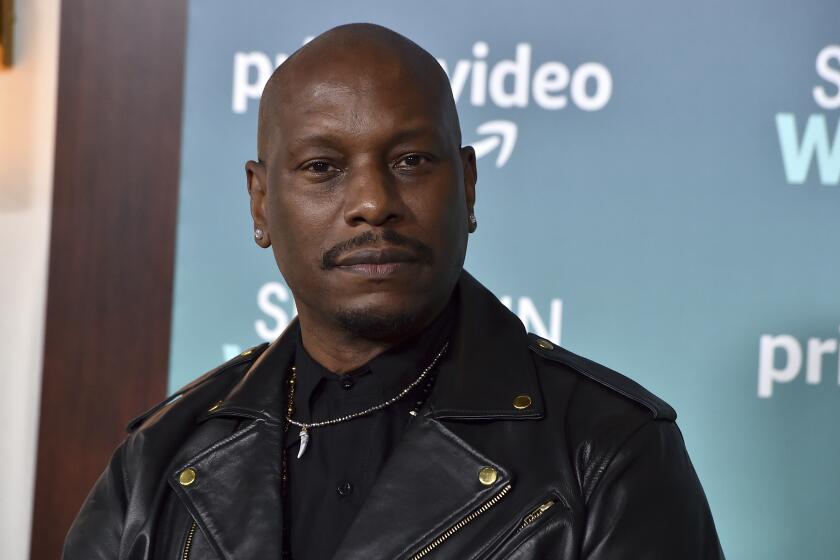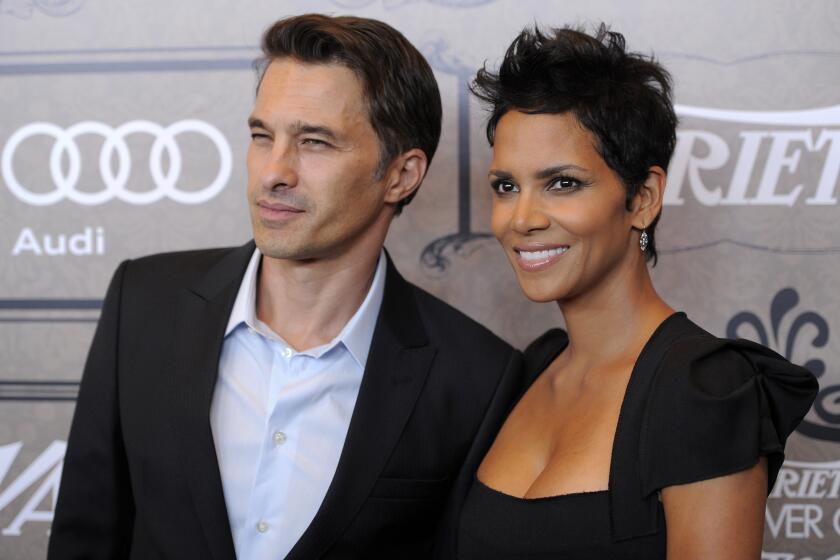Come Zither, Look!
Who speaks up for “The Third Man” and its director, Carol Reed? A major success in its day--it won the Palme d’Or at Cannes 50 years ago--it tends to be faintly recalled by film fans as something they saw and enjoyed once upon a time. Rarely has a film been so in need of a major reissue, and rarer still is the amount of moviegoing pleasure in store for those who revisit this classic in its weeklong run at the Nuart in West Los Angeles, which starts Friday.
Rialto, a company that specializes in landmark revivals (previous efforts include Jean-Luc Godard’s “Contempt,” Federico Fellini’s “Nights of Cabiria” and Michael Powell’s “Peeping Tom”), has provided an exceptional new print that showcases Robert Krasker’s Oscar-winning black-and-white cinematography.
Glorying in a nocturnal atmosphere of deep and dangerous shadows, a dark world in every sense of the word, this new print underlines how right American Cinematographer magazine was in recently naming “The Third Man” one of the 10 best shot films of cinema’s first half century.
The Nuart’s print also brings “The Third Man” back to its original form. That means that 11 minutes of excised footage, mostly trims from existing scenes, have been restored. And instead of star Joseph Cotten reading the opening voice-over, it’s director Reed, with a voice much better suited to the bemused cynicism of Graham Greene’s script, who gets to archly comment, while the camera reveals an unidentified corpse floating face down in the water, that in terms of corruption “amateurs can’t stay the course” in postwar Vienna.
The new print even features a few more minutes of the film’s most characteristic element, the indelible zither playing of Anton Karas. The story goes that director Reed stumbled upon Karas playing in a small cafe outside Vienna and decided to use him on the spot. Wherever he was found, Karas’ music became a worldwide sensation, leading to a U.S. ad campaign that promised, no kidding, “He’ll have you in a dither with his zither!”
Just as much of a character as anyone played by an actor is Vienna in these lean and nasty days when the city was divided into sectors run by each of the great powers. “The Third Man” makes excellent use of specific real-life locations, all specified by Greene, like the Great Wheel of an amusement park, the lonely Central Cemetery and the slightly seedy nightclub.
Even more evocative are the city’s magnificent buildings, often glimpsed half-crumbling or standing destitute next to enormous piles of rubble. The atmosphere Reed and company created is as thick as the local coffee, an ideal setting for a world without heroes where everyone is either a fool, a cynic, a criminal or, quite possibly, a combination of all three.
Into this cesspool of casual amorality comes Holly Martins (Cotten), a bumbling, self-righteous American (Greene didn’t think there were any other kind) who has naive notions of justice and righteousness plus a great deal of misplaced confidence in his ability to get to the bottom of things. “The Third Man” is the story of his unsentimental education, of the hard road he travels in the getting of wisdom.
A self-proclaimed writer of “cheap novelettes” with names like “The Lone Rider of Santa Fe” and “Death at Double X Ranch,” Martins has come to Vienna at the behest of his oldest friend and possible future employer, Harry Lime.
Unfortunately, everyone tells him, he has come just a bit too late. Lime has been killed, the victim of a random traffic accident, mourned only by his girlfriend, Anna Schmidt (Alida Valli), and a pair of epicene Viennese named Baron Kurtz (Ernst Deutsch) and Dr. Winkel (Erich Ponto).
Also at Harry’s funeral is Major Calloway (a crisp Trevor Howard), a British military policeman who tells Martins that his erstwhile boon companion was a trafficker in adulterated penicillin, “the worst racketeer who ever made a dirty living in this city.”
Filled with alcohol-inspired righteous indignation and never considering that he might be getting into something considerably out of his depth, Martins is determined to prove the major wrong and find out what really killed Harry, starting with trying to discover who the mysterious third man seen at the site of the accident might be. “Death’s at the bottom of everything, leave death to the professionals,” the major says but Martins is in no mood to listen.
Working closely with director of photography Krasker and showing a fondness for disconcerting camera angles, director Reed does exceptionally well conveying the topsy-turvy nature of this world of smiling insincerity where a man typically speculates on Lime’s afterlife state by saying, “He’s either in heaven [pointing down] or in hell [pointing up].”
Reed and Greene also combine to create vivid characters who are very much of their time and place, like the smirking Baron incongruously walking through a Viennese cafe holding a copy of Martins’ “Oklahoma Kid” or the small boy (Herbert Halbik) living in Lime’s apartment building who starts to resemble a sinister, malignant dwarf.
Welles Wrote Parts of His Dialogue
“The Third Man” provides superior roles for all its lead actors as well, especially for Orson Welles in a part that influential French critic Andre Bazin called a milestone in his career. Not that the American actor wasn’t fussy: Reed later recalled that Welles initially rebelled against filming in underground Vienna by saying, “Carol, I can’t work in a sewer. I come from California!”
Because it is conceded that Welles wrote parts of his own dialogue, including the celebrated speech comparing the relative merits of peaceful Switzerland and Italy under the bloody Borgias, film historians have sometimes argued how much of the credit for this exceptional film belongs to him.
But anyone familiar with the best of Reed’s work, tightly drawn, literate, popular items like “Odd Man Out,” “Fallen Idol” and “Outcast of the Islands,” can see how smoothly “The Third Man” fits into that equation.
Given this film’s success at Cannes so many years ago, it’s interesting to speculate what this year’s artier-than-thou David Cronenberg-led jury would have made of “The Third Man.” In all likelihood, they would have scoffed at this great work as too accessible to mainstream audiences. Truly, film has come a long way in 50 years, and much of it in the wrong direction.
BE THERE
“The Third Man,” a restored print of the 1949 classic set in post-World War II Vienna, directed by Carol Reed with a screenplay by Graham Greene and starring Joseph Cotten, Orson Welles, Trevor Howard and Alida Valli, opens Friday for a one-week run at the Nuart Theater, 11272 Santa Monica Blvd. (310) 478-6379.
More to Read
Only good movies
Get the Indie Focus newsletter, Mark Olsen's weekly guide to the world of cinema.
You may occasionally receive promotional content from the Los Angeles Times.

